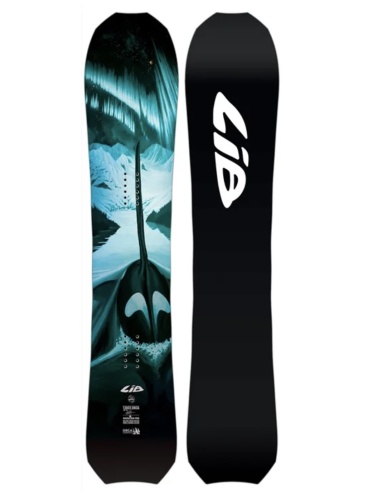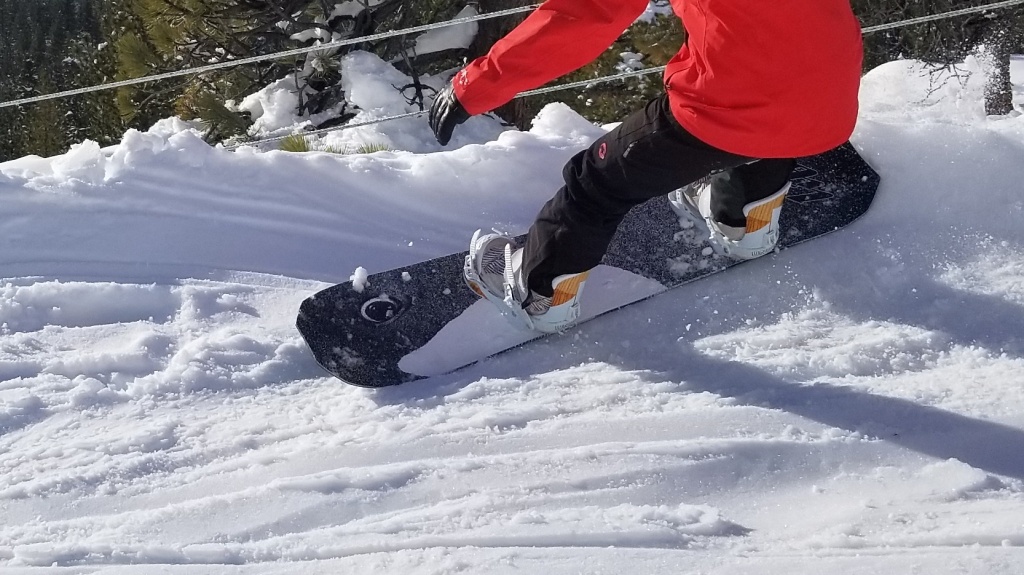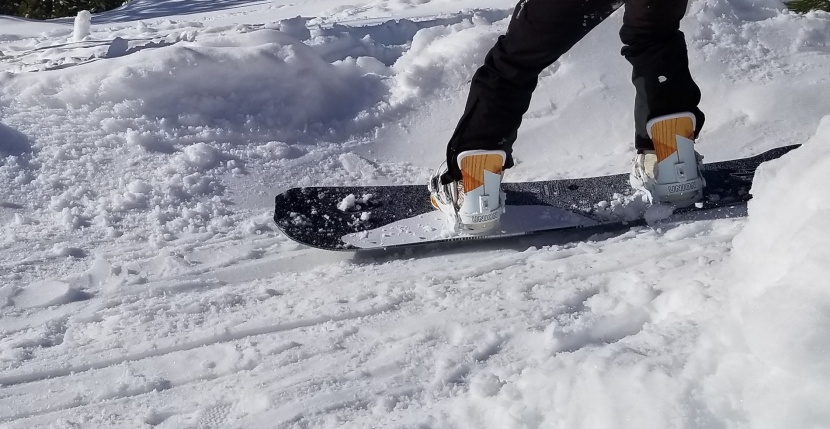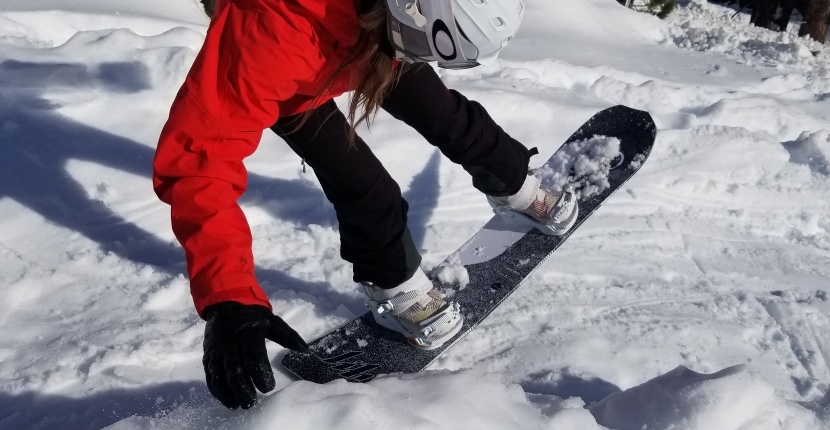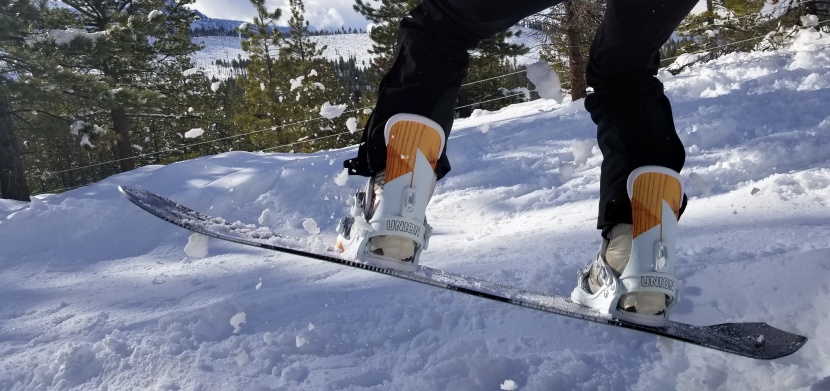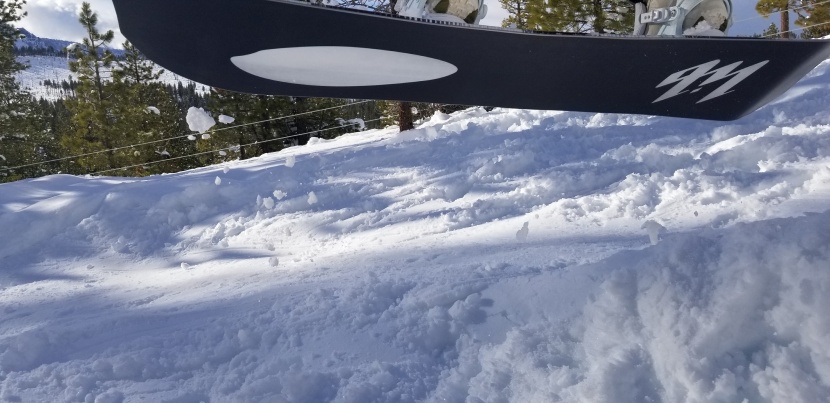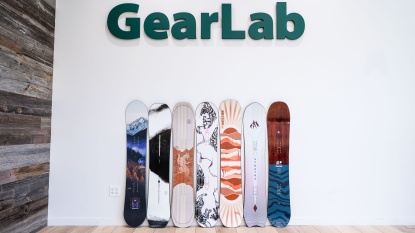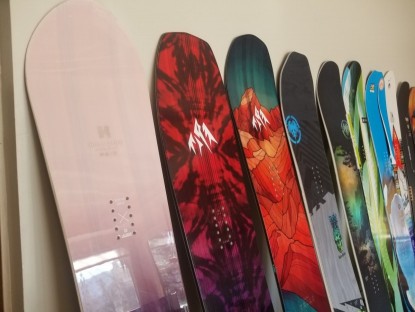Lib Tech T.Rice Orca Review
Our Verdict
Our Analysis and Test Results
Edge Hold
The first aspect we tested for in each board is how well it holds an edge, which constitutes 25% of its total score. We started off by riding the Orca in varied snow conditions and noting how well the edge — both toeside and heelside — held in each.
The T. Rice Orca has magne-traction edges, which offers increased control by adding a wavy edge in the “dead zone” area of your edge that is right under your feet while carving. These increase the effective edge length of the board and are absolutely fantastic when riding in mixed snow conditions. The Orca's superior edge ensures that you don't spiral out of control when you hit an icy patch… most of the time. This board is great at cutting through chop and is super forgiving, but it's not the snappiest board and is comparatively slow edge-to-edge, giving it a little less overall edge hold than some of the other Magne-traction boards that are just a bit springier.
Powder Performance
Following edge hold, our next — and easily the most fun — aspect of testing was scoring how well each board rode in powder. Overall, this component of our testing process determined 20% of the final score for each board. We waited for storms, then took out each board and tried to find as many freshies as possible, ranking and scoring how much they floated and how well they handled. It was here that the Orca stood out from the rest.
The secret to this board's amazing float in powder is its somewhat unconventional shape and design. This short, fat board is extremely directional, with its width tapering from the nose to the tail. It has a hybrid rocker camber profile, with a reverse camber underfoot and regular camber at the tip and tail.
It has a setback stance and an exceptionally long nose, which contributes greatly to its unparalleled amount of float in even the deepest snowfalls.
Stability
After playing around in the powder, we evaluated and compared each board's stability — especially at higher speeds. For this metric, also worth 20% of the total score for each snowboard, we went to the steep groomers and really opened up the throttle. The Orca did very well for its exceptional stability in most snow conditions.
No matter how fast we pushed it, the Orca never gave us any cause for concern. It cuts through chop with ease and isn't prone to any sort of speed wobble at all.
Playfulness
Next, we rated and scored how playful the Orca is, which also accounts for 20% of the total score. Unfortunately, this snowboard is a bit on the serious side and isn't the most playful compared to some of the competition, but it still scored above average here.
The stiffness of the Orca is a bit of a detriment in this category, as it makes it much harder to flex and maneuver. This board definitely isn't a park board, but it can be quite fun in natural features, such as gullies or small canyons, and we found it to be a blast in boardercross style terrain.
Pop and Jumping
Our last metric focused on how easy it is to jib or jump with each board, which constitutes the remaining 15% of the final score. The Orca's stiffness and length again proved to be a bit off in our testing.
This board isn't the most versatile and is really best for steep terrain and deep powder. It feels quite heavy and is overall harder to jump and doesn't want to lift off quite as well as some of the more flexible boards. We still could do a tail press on the Orca, but you can tell it didn't really want to and we had to try quite a bit harder than some other boards.
Value
The Orca isn't the best value, as it is one of the more expensive boards and isn't the best all-in-one all-mountain board that some other boards are. We wouldn't necessarily want this board for all conditions, so it's not our top choice if you can only afford a single board.
Conclusion
All in all, the Orca is easily our top recommendation for steeps and deep snow. If that isn't what you ride all the time, then we would suggest an overall more versatile and well-rounded board.


